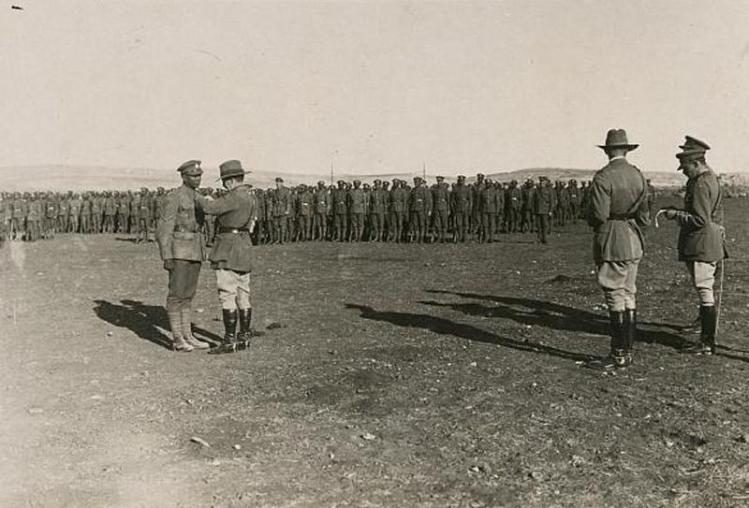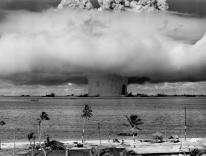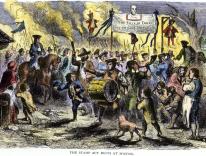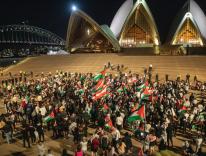
When he set out to write about World War I, in which he’d served as an infantryman, David Jones gave himself a straightforward task: “to make a shape in words, using as data the complex of sights, sounds, fears, hopes, apprehensions, smells, things exterior and interior, the landscape and paraphernalia of that singular time and of those particular men.”
Straightforward, but deceptively so, because as soon as we live through an experience we immediately begin smothering it with narratives, simplifying and pruning and distorting and inventing for our own purposes. And if we have no connection to the experience at all…well, that primary data is quite simply unavailable to us. Which is why I was skeptical of Ishion Hutchinson’s book of poetry about World War I, School of Instructions. Its cover and accompanying letter from the publisher directly reference Jones as an inspiration. But for Jones, whose In Parenthesis may be the single greatest book about the experience of the frontline soldier, the reality of combat and the trenches lived rawly within him throughout all of his poverty-stricken life. How could a modern writer follow in Jones’ footsteps when their subject but crucially not their experience is also the First World War?
The question is similar to more contemporary (and often wearying) debates about who can write what—can a white man write about Black experience, a civilian write about veterans, and so on—but with the added dimension of time. Not only is the writer hampered by his lack of personal experience, but he cannot, as Stephen Crane did with veterans of the American Civil War, interview direct participants and, through them, vicariously touch the subject of their work. However much such a writer may claim to be recovering a forgotten history, he lives outside the lifeworld of which he speaks. This is why Henry James accused historical fiction of “a fatal cheapness,” no matter how well researched. “In its essence the whole effect is as nought,” he wrote. “I mean the invention, the representation of the old CONSCIOUSNESS, the soul, the sense, the horizon, the vision of individuals in whose minds half the things that make ours, that make the modern world were non-existent.”
But even if this is true—War and Peace and Middlemarch suggest otherwise—how is the poet to respond? When Derek Walcott claims that “the sense of history in poets lives rawly along their nerves,” he’s staking out what counts as the visceral and immediate territory of the artist, as opposed to the merely imaginative. We are not creatures of the moment, “existentialism is simply the myth of the noble savage gone baroque,” and so we must somehow evoke a past which is at once utterly foreign and intimately ours.
Enter Ishion Hutchinson. School of Instructions emerged when the Imperial War Museum in London commissioned Hutchinson to do research in 2016 on West Indian participation in the First World War. Perhaps they thought they’d get a poet “recovering forgotten histories” by making stuff up. But Hutchinson is a reader not only of Jones but also of the great English poet Geoffrey Hill. He is acutely conscious of how we project ourselves into the past, but also of how the past blends continually, and complexly, into the present, inaccessible and yet constitutive of our very being. Instead of an imagined infantryman fighting in the Middle Eastern campaign—the only campaign in which West Indian troops saw combat—Hutchinson centers his poem on Godspeed, a boy attending a strict school in rural Jamaica in the 1990s, reading his Britannia and communing with the past. The narrative of the soldiers is told at a cool distance, often as if scanning archival reports of troop movements, while the Godspeed sections this narrative bleeds into allow for the history to become tactile: “Brittle bible sheets of his Britannica ached countries / under his thumbs. Uric acid steamed off skulls between / UMBRELLA HILL and the tinfoil sea at SHEIKH / HASSAN which was successfully assaulted and held by / the battalion. He lifted his fingers there were new / borders and some countries had changed their names.”
Periodically, we get the numbers of the living (“The strength of the battalion stood at 328 officers and 5321 / other ranks”), which steadily decline throughout the book. There’s the occasional casualty, such as “App. C.H. ‘B’ boy / killed accidentally by grenade,” or a disciplinary case: “And the / curtains of MIDIAN did tremble when he woke and / murmured a memorial for Pte. A. Denny who at that / time was shot by a firing squad.” Instead of sensually imagined poetic detail, we get the administrative data of a life snuffed out, and watch it echo in the life of a child decades later. Hutchinson’s deliberately impersonal style forces the reader to feel the paucity of the evidence. We thrill at the occasional archivist’s find and wonder what lies behind it, what the data of troop moments and casualties conceal. Restraint is the operative mode here, though occasionally a phrase will startle. “Wild butchery of souls blossomed in the desert,” begins one section, but what follows is not an image of combat but Godspeed shaking a jam jar full of fireflies, and a report of the now severely diminished numbers of troops. In an earlier section we get an incantatory list of the types of mud the men shoveled to build trenches: “Frostbitten mud. Shellshock mud. Dungheap mud. Imperial mud. / Venereal mud. Malaria mud. Hun bait mud. Mating mud.” This goes on for fourteen lines, the list ranging beyond the conventional tropes of the First World War to evoke what Jones referred to as the “mythus and deposits,” the poet’s cultural context, before ending with the line, “They resurrected new counterkingdoms, / by the arbitrament of sword mud.”
Here Hutchinson’s apparent restraint masks a grand ambition, to recover those whose historical absence calls to mind the bleak words of Ecclesiasticus that he uses for his epigraph:
AND SOME THERE BE, WHICH HAVE NO MEMORIAL;
WHO ARE PERISHED, AS THOUGH THEY HAD NEVER
BEEN; AND ARE BECOME AS THOUGH THEY HAD NEVER
BEEN BORN; AND THEIR CHILDREN AFTER THEM.
Is this the condition of these soldiers? And if so, how does one memorialize a history whose relics are so few? In “Air,” Derek Walcott says of the Caribbean that “there is too much nothing here” because the “jaws of the rain forest…never rest, / grinding their disavowal of human pain.” The same is true of the jaws of empire when it comes to subject peoples: the main document Hutchinson had to work from was the journal of a white soldier, offering him nothing from the inside.
One strategy, then, is the continual running together of Godspeed’s own experience (close enough to Hutchinson’s) with the past, as in a mention of shoveling trenches intercut with Godspeed observing his bereft aunt, whose lover, a cruise ship waiter, is lost to the sea. This is followed by a line with doubled meanings: “God was a wicked God to cripple so much / beauty.” In another passage, troop movements to Baghdad and Amman precede a paragraph about a flood of butterflies, alive on the lilies but dead or slowly dying on the road, crushed time and again by passing cars. Godspeed responds to this sight of beauty and horror by ordering “a hurricane to wipe the roads clean,” and the men cross a blazing hot country without cover to “TAHPANHES where weeping was ceaseless.” What is odd, as we move through these scenes, is that the richly described present often seems more insubstantial than the scraps we’re given of the past, and we begin reading sections like those on the butterflies as imagistic links to the history we cannot see. In Hutchinson, the “now” is a palimpsest through which the obscured past unexpectedly appears, and so the careful attention to the present reveals what Anthony Domestico calls a “layered plentitude.”
But as the book reaches its haunting conclusion, the diminished numbers of soldiers loom larger and larger.
Some survived
Black luminosity. Some survived.
(They went on, back with wounds which never healed.)
Still, others did seep into the landscape,
neither degraded nor with dignity.
Dark matter, all over again, in the sun.
What Hutchinson recovers of these soldiers, then, is not some imagined specificity of their individual characters and traits, but rather the way in which their wounds, lives, and deaths persist, invisibly shaping not simply the modern Godspeed but the very landscape, as dark matter shapes gravitational effects. “THEY WERE BORN AND THEIR BLOOD STILL / ECHO,” he tells us in the final dedication, and it is Hutchinson’s caution and the respect with which he approaches his subject—never cheating, never pretending to know more than he does, while nonetheless never able to believe his subjects truly disappeared into oblivion—that allows us to feel viscerally that strange entwining of the forgotten dead and the present.
School of Instructions: A Poem
Ishion Hutchinson
Farrar, Straus and Giroux
$26 | 112 pp.
Please email comments to [email protected] and join the conversation on our Facebook page.
Previous Story
Hmong New Year in the Ozarks
Next Story
What Montaigne Knows


